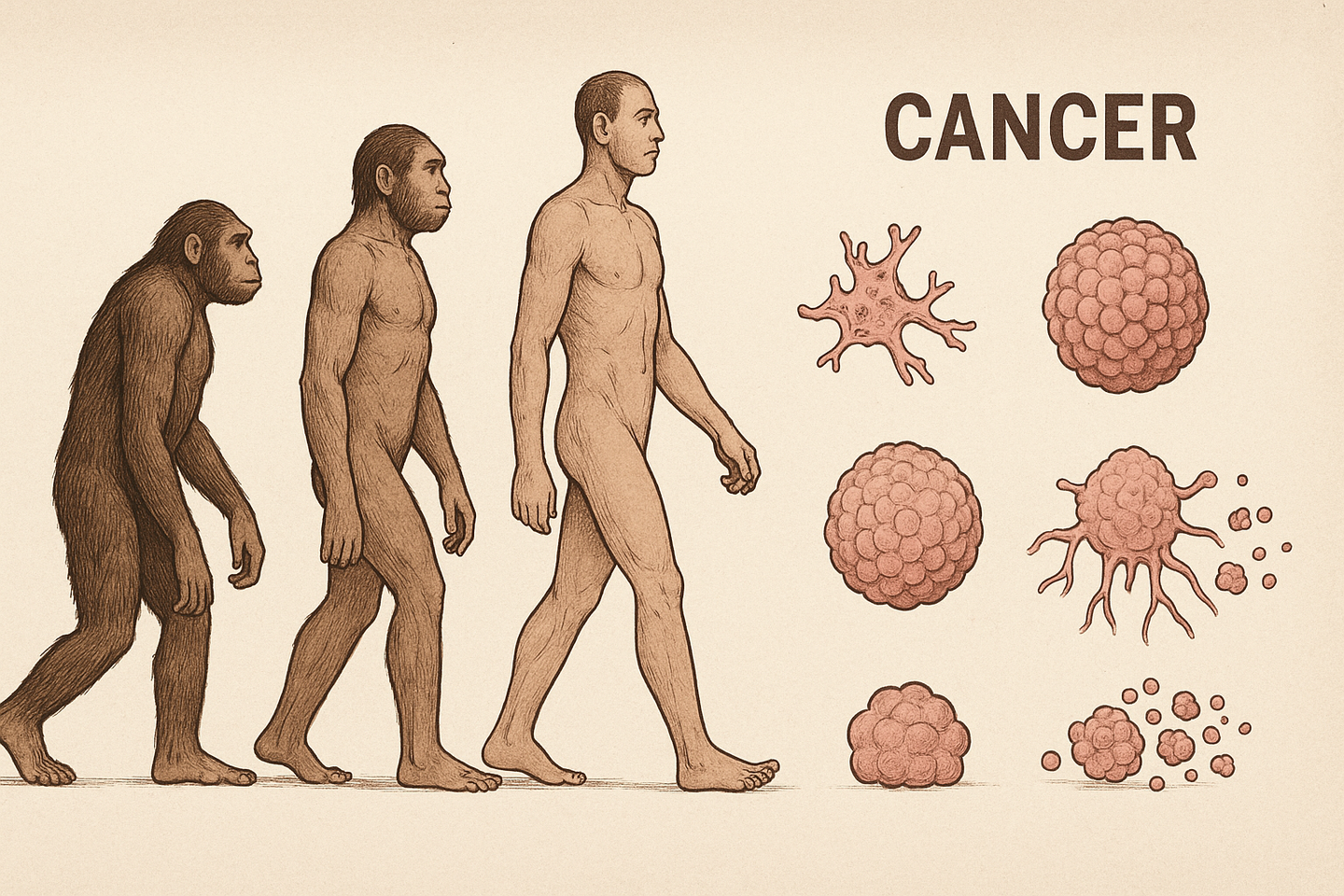Researchers reveal a surprising link between human evolution and cancer
Researchers find that genes key to brain evolution also fuel cancer—offering new hope for future treatments through mRNA vaccines.

Brain-evolving genes reawaken in tumors. Now scientists are using them to develop powerful new cancer treatments. (CREDIT: The Brighter Side of News / CC BY-SA 4.0)
A new study is shedding light on an important connection between human evolution and cancer. It reveals that some of the very genes that helped make our brains smarter are also being misused by cancer to help tumors grow. These findings could open the door to new ways of treating cancer—by targeting genes that are unique to humans.
Young Genes With Powerful Effects
Led by Dr. LI Chuanyun at the Institute of Genetics and Developmental Biology of the Chinese Academy of Sciences, the research team focused on a rare class of genes called de novo genes.
Unlike most genes that arise by copying and tweaking older ones, these genes appear from scratch, developing from DNA that once had no role at all. Over time, these new genes gave rise to entirely new functions.
By comparing 120 mammalian genomes and analyzing data from 1,900 human tissue samples and 100 million protein spectra, the scientists identified 37 de novo genes that are found only in humans and our closest ape relatives.
These genes tend to be active during early development, especially in the brain and reproductive organs like the testes. Their role in shaping human traits—such as our large brain and advanced thinking—has been suggested in earlier studies by the same team.
But as this study shows, cancer seems to have found a dangerous use for them.
Cancer Finds a Loophole in Human Evolution
The researchers looked at over 5,200 tumor samples from 22 types of cancer. They found that nearly half of these uniquely human genes became active in tumors. In normal adult tissues, they stay switched off. But in cancerous cells, something goes wrong—and the genes switch back on.
Related Stories
- Natural sweetener Stevia found safe and effective at killing pancreatic cancer cells
- Breakthrough blood test detects colon cancer early with 95% accuracy
- New drug combination protects women from breast cancer and diabetes without side effects
One reason for this abnormal activity is a genetic structure called extrachromosomal circular DNA (ecDNA). These circular DNA fragments are separate from the chromosomes and often carry cancer-related genes. They can increase gene expression rapidly and unpredictably. Many of the human-specific genes were found on these ecDNA structures inside tumor cells.
Using tools like CRISPR-Cas9 and small interfering RNA (siRNA), the team tested how these genes affect cancer cell growth. About 57% of the genes were shown to actively boost tumor cell growth. Even worse, high levels of these gene products in a tumor often meant a poorer outcome for patients.
Dr. LI explained the dual nature of these genes by saying, “This is evolution’s gamble. The same genetic innovations that make us smart appear to make us vulnerable, but we are turning this evolutionary vulnerability into clinical opportunity.”
Turning the Tables on Tumors
Two genes in particular stood out: ELFN1-AS1 and TYMSOS. These genes don’t exist in any other species and stay inactive in healthy adult tissues. However, they light up inside tumors, making them standout targets for cancer treatment. “These genes are like dormant bombs,” said Dr. LI. “They’re completely absent in other species, inactive in healthy adult tissues, but get reactivated only in tumors—making them ideal targets.”
That’s exactly what the researchers tested. Working with Dr. CHENG Qiang from Peking University, they created mRNA vaccines to train the immune system to recognize proteins that these genes produce. When the team tested the vaccines in humanized mouse models—mice with human-like immune systems—the treatment triggered a strong immune response against the tumors.
Combining the mRNA vaccines with existing immunotherapy made the results even stronger. In addition, immune cells from real cancer patients responded to the vaccine by targeting the gene-specific proteins. This shows that the approach may work in human patients, not just in lab animals.
From Hidden Code to New Hope
Co-senior author Dr. AN Ni explained that researchers had long overlooked these genes. “These evolutionarily young genes were invisible to cancer research for two key reasons,” she said. “First, they’re absent in standard model organisms, and second, genomic databases misannotated them as non-coding or pseudogenes.”
Since common lab animals like mice or rats lack these genes, most cancer studies ignored them. And because databases mislabeled them, scientists didn’t explore their role in disease. Now, better tools and more complete genomic data are helping researchers uncover their significance.
This study stands out because it connects two different fields—evolutionary biology and cancer medicine. On one side, the genes helped humans become more intelligent. On the other, tumors now use those same genes to grow. By understanding both sides, scientists can develop new ways to fight cancer—possibly using the same evolutionary tools that built the human brain.
Hope Through History
Using our evolutionary past to fight one of today’s deadliest diseases feels both scientific and poetic. The genes that helped shape human intelligence could now help save lives.
Because of this research, doctors may gain new tools to fight cancer in ways they couldn’t before—by targeting genes unique to our species. The future of cancer therapy may rest in understanding what makes us human.
Research findings are available online in the journal Cell Genomics.
Note: The article above provided above by The Brighter Side of News.
Like these kind of feel good stories? Get The Brighter Side of News' newsletter.



